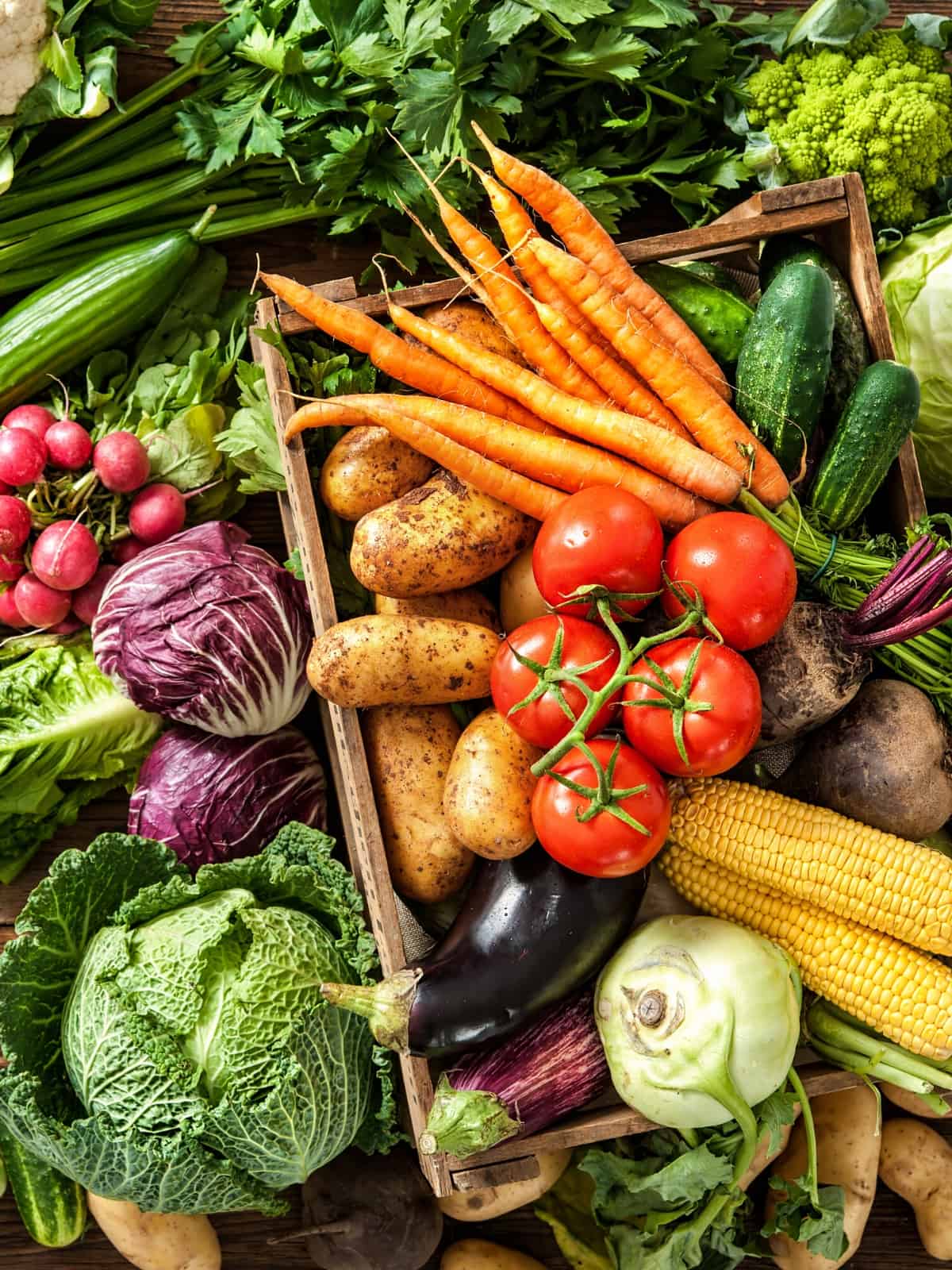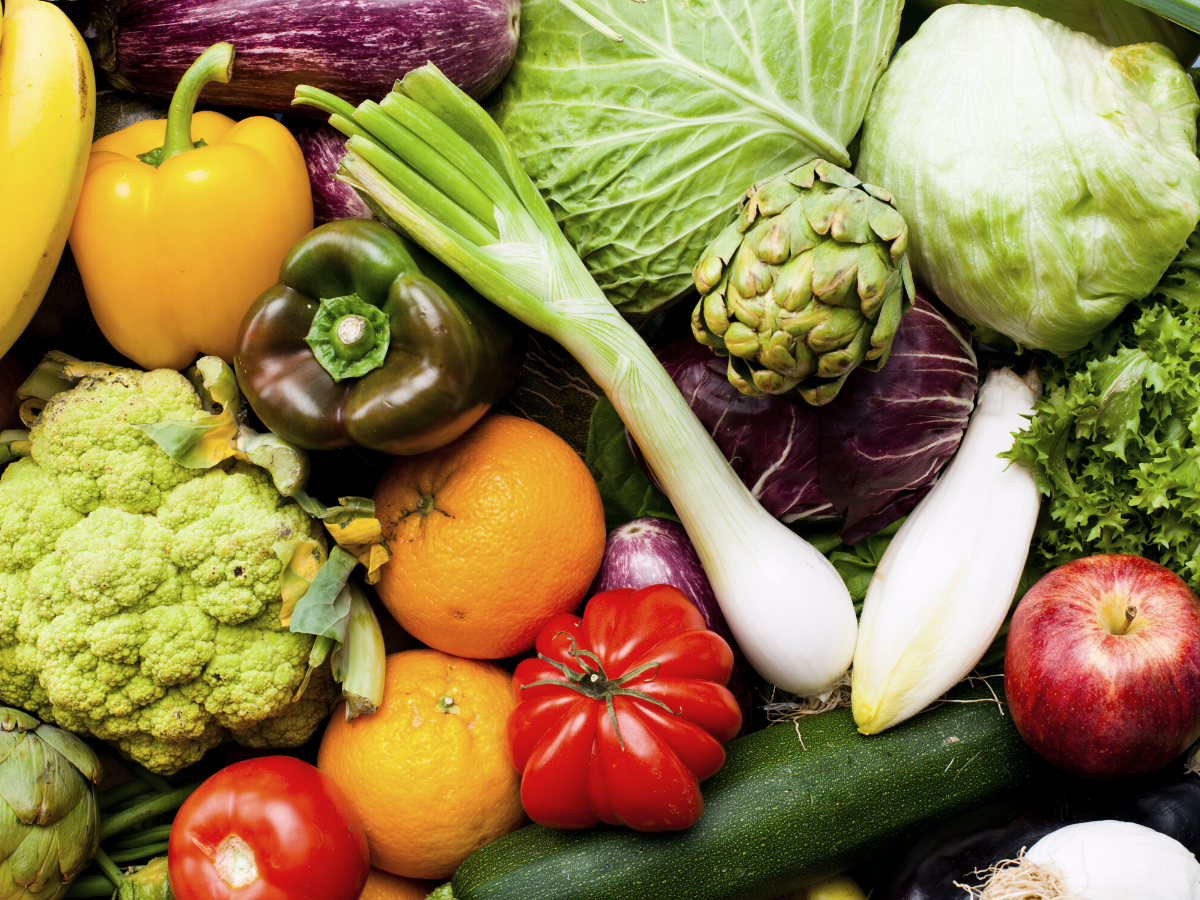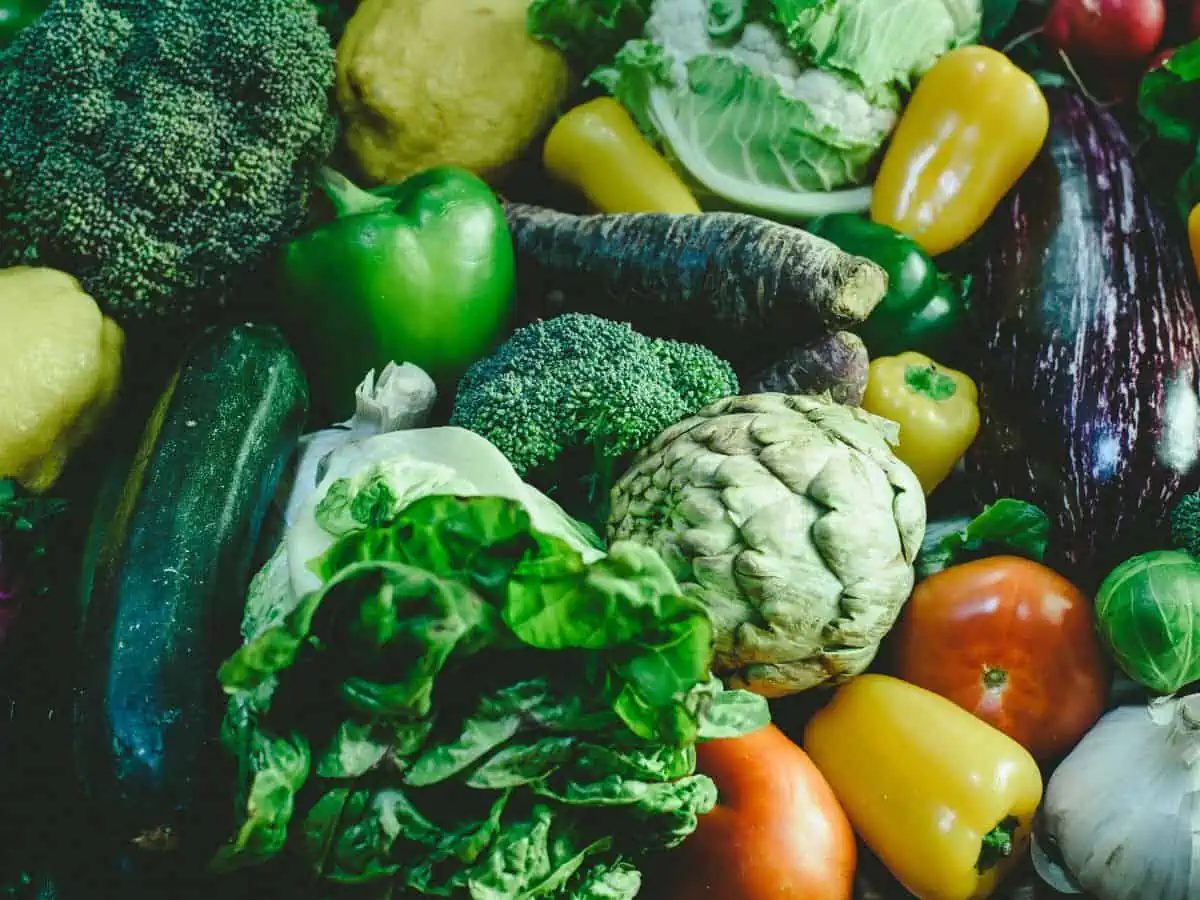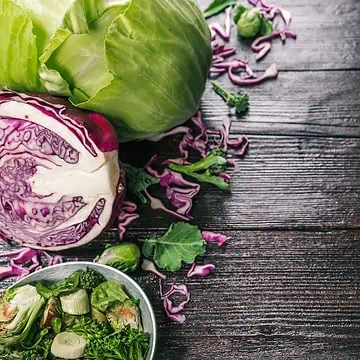Eating seasonal produce is not only more delicious and nutrient-rich, but it's also a great way to save money! Not to mention, eating fruits and veggies when they're in season can help reduce the environmental impact of farming off-season.

JUMP TO
Nowadays, we’ve been spoiled by our access to a seemingly endless array of fruits and vegetables. These are often imported, transported, or grown in artificial settings, making them available to us year-round.
But in this fast-paced society filled with modern conveniences, we’ve forgotten that the availability of fruits and vegetables depends on the season.
By choosing seasonal produce, you can guarantee that they have been harvested at their peak. This ensures their maximum freshness and nutrient density.
Plus, it hasn’t had to undergo any chemical processes, so it’s much more affordable.
And it’s better for the environment, too – by consuming local produce, you’re helping to encourage local farming communities. Buying local reduces the environmental impact that farming off-season creates.
So, next time you’re at the market, be sure to pick up some seasonal produce – our seasonal produce guide will help you!
Why Should You Eat Seasonal Produce?
1. They are better for you.
Research has shown that fruits and vegetables that are eaten during their peak seasons are nutritionally superior to out-of-season produce.
Long transport times and the length of time that produce remains on shelves means that more vitamins, minerals and antioxidants are leaked out.
University of California studies show that vegetables can lose 15 to 55 per cent of vitamin C within a week.
2. Chemical and preservative-free.
Growers cultivate out-of-season fruits and vegetables in artificial environments rather than allowing them to follow their natural growing and ripening cycles.
In order to make fruits and vegetables available year-round, people use ripening agents such as pesticides, waxes, and preservatives so that they can arrive on your supermarket shelves looking fresher and stay artificially fresher for longer.
Also, they may conduct fumigation of imported fruits and vegetables for biosecurity reasons.
3. They taste amazing.
Who hasn’t sampled a friend’s homegrown tomato crop and marvelled at the wonderful tomatoey aroma and intense flavour? That is because they ripen naturally and not artificially.
Mass production has forced commercial farms to forgo taste in favour of quantity and appearance when it comes to fruits and vegetables.
4. Environmentally friendly
Eating seasonal produce reduces the environmental impact that farming them off-season presents and encourages the consumption of local produce and local farming communities.
This means that your fruit and veg don’t have to travel as far, so fuel emissions and transportation costs are negligible.
5. They are cheaper.
In-season fruits and vegetables are in plentiful supply, which in turn means that they can be bought at a cheaper price.
So, if you are craving strawberries in winter or grapefruits during summer, just expect to pay more for them than if you had bought them when they were in season.
Following is a general guide to the most common seasonal produce available worldwide during each season.

Spring Seasonal Produce
Arugula
Artichokes: Jerusalem
Artichokes: Globe
Asian Greens*
Asparagus
Avocado
Beans: Broad
Beans: Fava
Cabbage
Green/Spring Onions
Kohlrabi
Leeks
Lettuce
Mizuna
Mushroom
Onions
Pea Varieties
Pre-packed Greens
Rhubarb
Radish
Rocket
Shallots
Silverbeet
Spring Onions
Sunchokes
Swede
Sweet Potatoes (Kumura)
Turnips
Wild Greens**
Witlof
Zucchini
Zucchini Flowers
Apricots
Bananas
Blueberries
Boysenberries
Cherries
Coconuts
Grapefruit
Limes
Loquats
Lychees
Mandarins
Oranges
Papaya
Passionfruit
Paw Paw
Peaches
Persimmons
Pineapples
Pomelos
Plums
Rockmelon
Strawberries
Watermelon
basil
chervil
chilli
chives
coriander
dill
garlic
ginger
kaffir lime leaves
lemongrass
mint
oregano
parsley
Rosemary
sage
tarragon
thyme
* Asian Greens - AA Choy, Amaranth, Chinese/Oriental Celery, Choy Sum, Chrysanthemum Greens, Tatsoi;
* Wild Greens - Amaranth, Dandelion Greens, Lamb’s-quarters, Orach, Sorrel, Watercress.
Summer Seasonal Produce
Asian Greens*
Avocado
Beans*
Bell Pepper
Capsicum
Celery
Chard and Rainbow Chard
Corn
Cucumbers
Eggplants
Green/Spring Onions
Lettuce
Okra
Onions
Patty Pan/Button/Scallop Squash
Summer Squas
Potato
Pre-packed Salad Greens
Rhubarb
Silverbeet
Tomatoes
Wild Greens*
Zucchini
Zucchini Flower
Apples
Apricots
Asian Pears
Bananas
Blackberries
Boysenberries
Cantaloupes
Carambola/Star Fruit
Cherries
Coconuts
Dragonfruit
Figs
Grapes
Honeydew
Lemons
Limes
Lychees
Mangoes
Mulberries
Nectarines
Oranges
Passionfruit
Paw Paw
Peaches
Persimmons
Pineapples
Plums
Rambutan
Raspberries
Rockmelons
Strawberries Watermelons
basil
Thai basil
chervil
chilli chives
coriander
dill
garlic
ginger
Kaffir lime leaves
lemongrass
mint
Vietnamese mint
oregano
parsley
Rosemary
sage
tarragon
thyme
* Asian Greens - AA Choy, Amaranth, Chinese/Oriental Celery, Choy Sum, Shiso, Tatsoi;
* Beans - Borlotti/Cranberry, Chinese Long/Snake/Yard-long, Flat/Romano, Green Bean Varieties;
* Wild Greens - Lamb’s-quarters, Orach, Purslane.

Autumn / Fall Seasonal Produce
Artichoke: Jerusale)
Arugula
Asian Greens*
Avocado
Beans in early fall*
Beets/Beetroot
Broccoli /Broccolini
Brussels
Sprouts
Cabbage
Capsicum/Peppers
Cauliflower
Carrots
Celery
Celery Root/Celeriac
Chard and Rainbow Chard Chicories and Endives
Daikon
Fennel
Kale
Kohlrabi
Apples
Asian Pears
Bananas
Clementines
Coconuts
Dragronfruit
Cranberries
Dates
Figs
Grapefruit
Grapes
Guava
Honeydew
Kiwi Fruit
Kumquat
Lemons
Limes
Mandarins
Oranges
Papaya
Passionfruit
Pears
Persimmons
Pomegranates
Pomelos
Plums
Quinces
Raspberries
Rhubarb
Strawberries
Tangerines
basil
chervil
chilli
chives
coriander
dill
garlic
ginger
Kaffir lime leaves
lemongrass
mint
oregano
parsley
rosemary
sage
tarragon
thyme
* Asian Greens - Amaranth, Chinese/Oriental Celery, Chrysanthemum Greens, Choy Sum, Shiso, Tatsoi;
* Beans - Borlotti/Cranberry, Chinese Long/Snake/Yard-long, Flat/Romano, Green Bean Varieties;
* Wild Greens - Amaranth, Dandelion Greens, Sorrel, Watercress.
Winter Seasonal Fruit
Artichoke: Jerusalem
Asian Greens
Avocado
Beets/Beetroot
Broccoli/Broccolini
Brussels Sprouts
Cabbage
Carrots
Carrots: Dutch
Cauliflower
Celery Root/Celeriac
Collard Greens
Chicories and Endives
Daikon
Fennel
Kale
Kohlrabi
Leeks
Mushrooms
Mustard Greens
Parsnips
Potato
Pre-packed Salad Greens Pumpkin
Rutabaga
Spinach
Sunchokes
Swede
Sweet Potato/Kumura
Winter Squash
Witlof
Bananas
Blood Oranges
Clementines
Dates
Grapefruit
Guava
Kiwi Fruit
Kumquat
Lemons
Limes
Mandarins
Oranges
Passionfruit
Pears
Persimmons
Pomegranates
Pomelos
Rhubarb
Tangerines
ginger
coriander
dill
mint
oregano
parsley
Rosemary
About this Guide
This is just a general guide to assist you in selecting fresh seasonal produce; you will find variations depending on where you are located and how good each year’s harvest has been.
The seasonal produce that you are able to find where you are will also vary depending on growing He and the weather. I have only included fruits and vegetables that are at their peak. If a vegetable/fruit was available during one month of the season I have included it in that season.





Leave a Reply